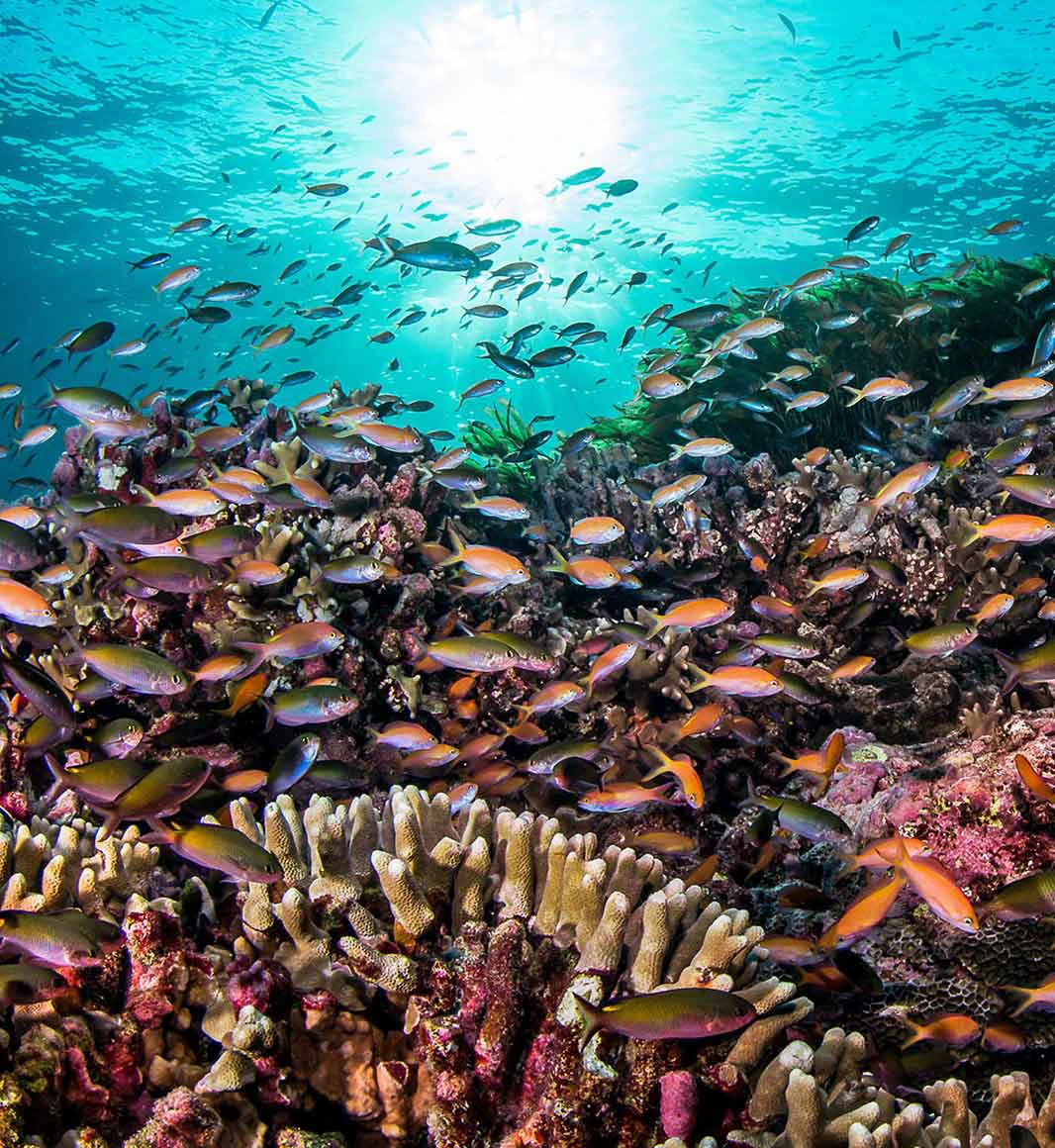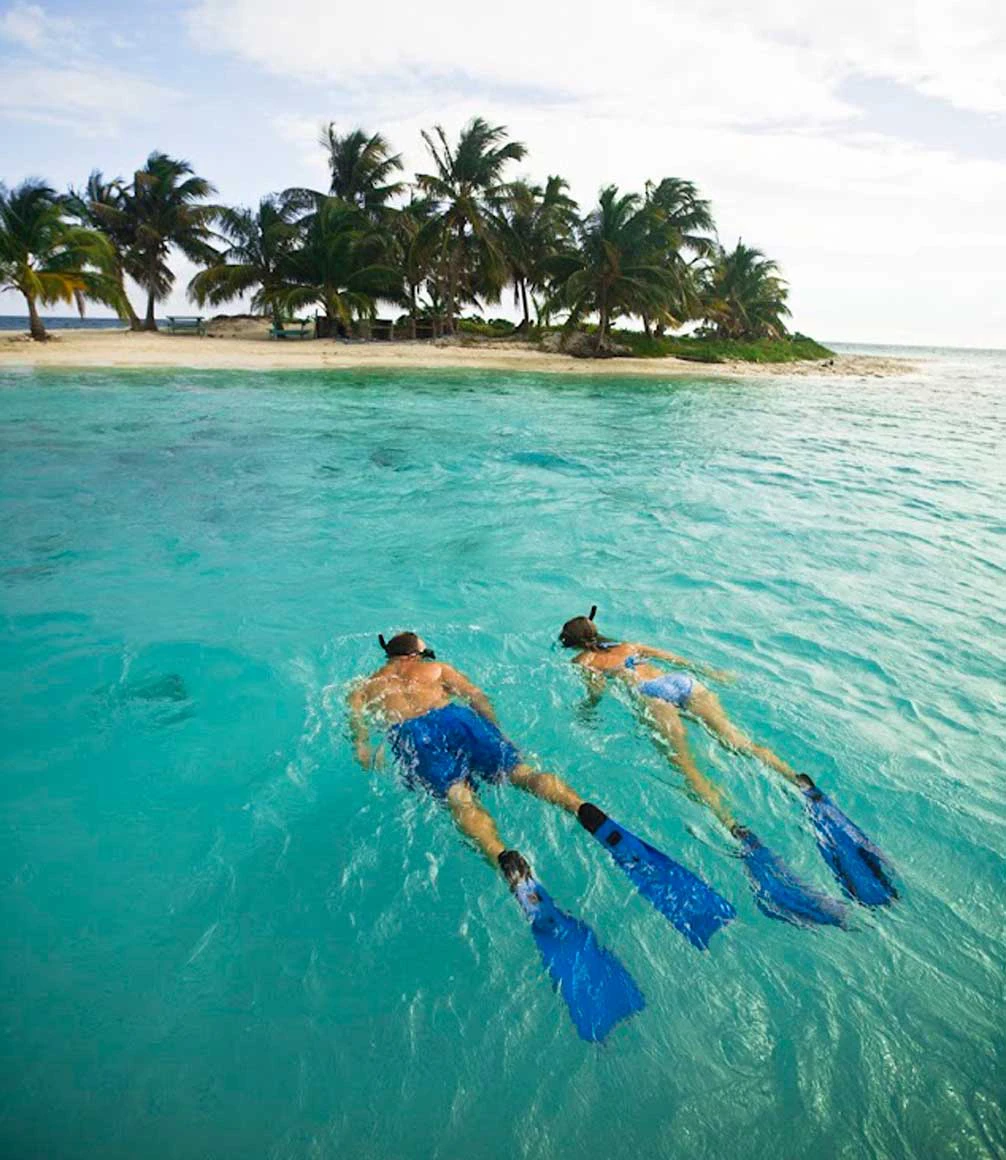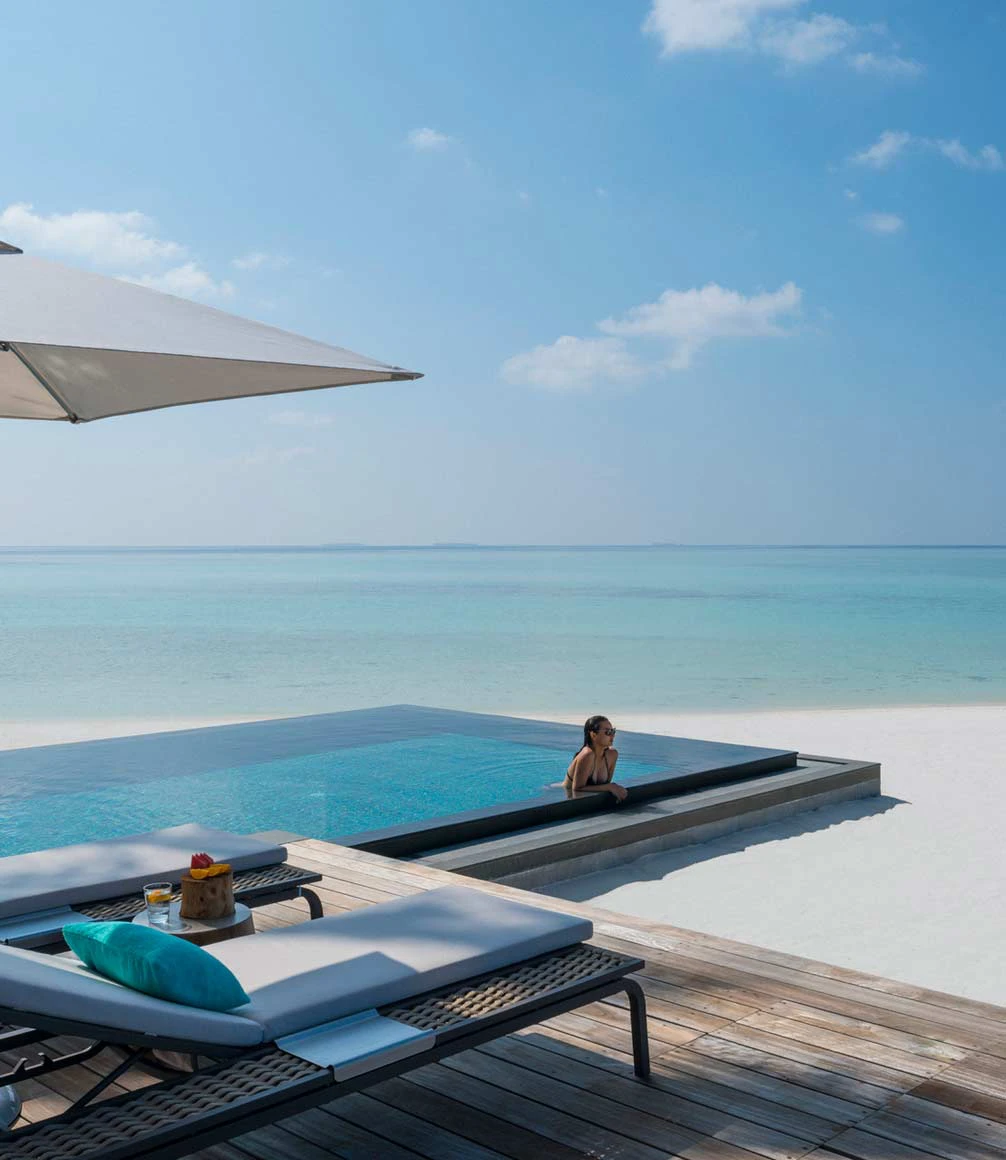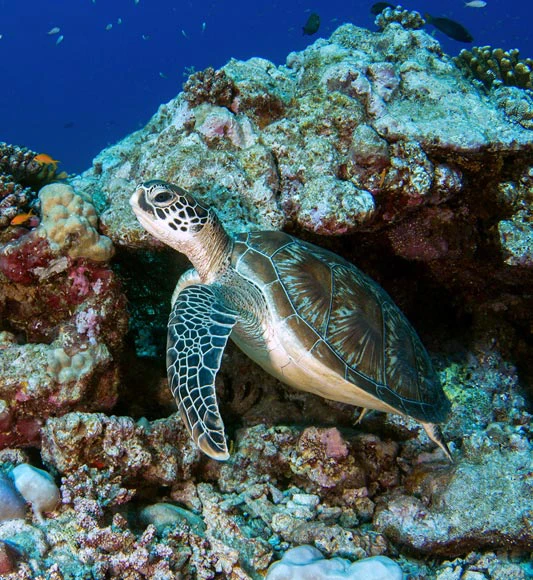Manta Ray Conservation in the Seychelles – an Interview with the Alphonse Foundation
by Emma D’Arcy
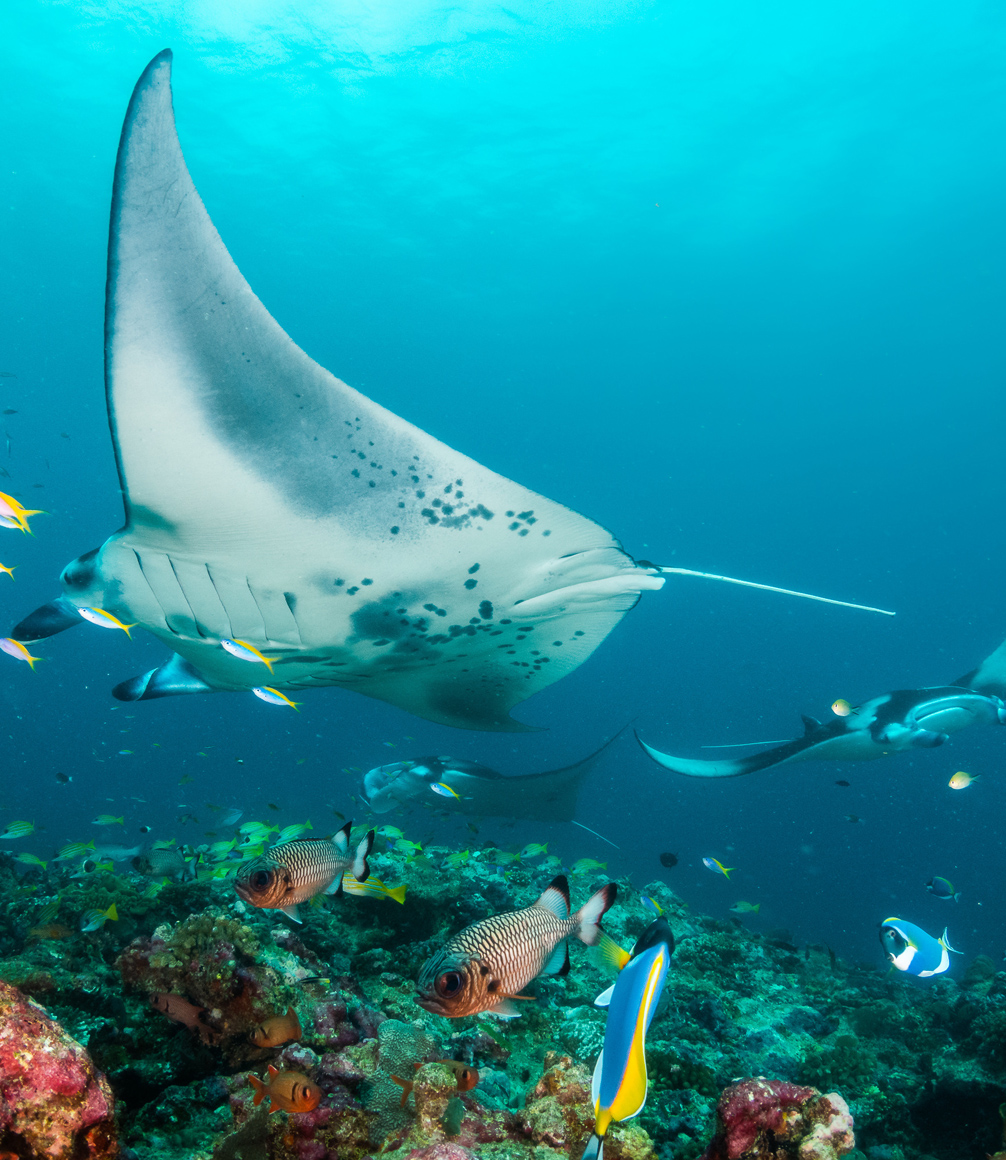
Recently we launched a collaboration with luxury British swimwear company, LOVE BRAND & Co, to raise awareness about the conservation of manta rays in the Seychelles.
Supporting vital conservation projects like the SMRP is central to our travel experiences. Founder of Explorations Company, Nicola Shepherd, explains, ‘We’re committed to protecting our planet, and it’s a joy to join forces with a like-minded, responsible brand like LOVE BRAND & Co. to highlight the brilliant work currently being undertaken by the SMRP.‘
Established in 2013 by the Save Our Seas Foundation and The Manta Trust in partnership with the Alphonse Foundation, the SMRP has identified over 470 manta rays through extensive research across the archipelago. Data is collected through photography, satellite and acoustic tagging studies to better understand the population size, movement patterns, habitats and aggregation sites of this enigmatic species.
Can you give us a sense of what makes the Outer Islands of the Seychelles, Alphonse & Astove such a magical location to explore?
The Outer Islands of the Seychelles are pretty undiscovered still. It’s incredible for saltwater fly fishing because the ecosystem is so pristine and that’s how experiential activities like diving developed. You can spend a whole day on the beach at Alphonse without encountering another person.
St Francois is uninhabited, it doesn’t have any invasive species, just thousands of sea birds and crabs everywhere – it’s a magical place. To think there are few places like this left in the world that are untouched – it’s a privilege to visit. The scenery is spectacular and the coral reefs are very healthy with an abundance of fish, thanks to the minimal fishing pressure.
My favourite place in the Outer Islands is Cosmoledo, part of the Aldabra Group. While everybody knows about the Aldabra Group, Cosmoledo is an uninhabited atoll within the group located a couple of hundred kilometres away. It’s breathtaking. Blue Safari has transformed eight shipping containers into luxury eco pods, and a big bell tent serves as a dining area under the stars. It’s just you and the seabirds – absolutely unreal.
The Seychelles offer a pristine habitat for mantas. Can you tell us what makes this environment significant as a potential nursery site for manta rays?
There are a huge amount of species only found in the Seychelles. This untouched paradise has remained largely unexplored, and for years we were the sole tourism operator in the Outer Islands.


"The population of manta rays in the Seychelles is unknown - we didn't know that it existed until less than 20 years ago, and it remains one of the most remote and undisturbed manta ray populations in the world, far removed from the pressures faced by those in more populated areas."
The Seychelles has a robust environmental management and conservation framework. The Seychelles Marine Spatial Plan (SMSP) is a comprehensive initiative that has been in progress for over a decade, aiming to designate marine protected areas. Many of the Outer Islands, where the mantas aggregate, will fall under these protected areas. This creates an incredibly unique opportunity to study a population of manta rays in an environment with minimal human impact.
Can you tell us in a nutshell what the purpose of your work is?
The purpose of the research is to find out as much as we can about manta rays and use the research from a fairly pristine population to apply to manta rays in other areas facing more significant threats.
Why is this conservation work so vital?
Reef manta rays are classified as vulnerable to extinction and oceanic manta rays are now critically endangered according to the International Union for Conservation of Nature (IUCN). Over the past 30 years, manta ray populations have decreased by about 30%, with some areas like Mozambique experiencing declines of over 80% due to the trade in their gills. This highlights the importance of having a partner like the Manta Trust, which operates projects worldwide and can raise public awareness on a global scale. The collaboration between the on-the-ground partner and an international NGO is crucial for effective conservation efforts.
Can you tell us about the great progress that the project has made so far – what are the key observations you’re finding about the Seychelles reef manta ray (Mobula alfredi) population?
Through tourism, it became apparent that there are quite consistent aggregations of manta rays, with over 470 individuals now identified, mostly from two study sites. We’ve observed reef manta aggregations around the Alphonse Group and unlike oceanic manta rays, they are more resident in certain areas. While they do travel to some of the other islands, they don’t cross entire ocean basins.
The spatial ecology and life cycle of reef mantas are fascinating. For instance, St Francois has a unique lagoon habitat where baby mantas are regularly seen. These baby mantas measure around a metre and a half across, whilst the largest manta in our database spans approximately 4.2 metres.
What are the most surprising and fun facts you’ve learned about manta rays and their behaviour?
Manta rays are amazing animals to be in the water with, and completely harmless! They boast the largest brain-to-body mass ratio of any fish, exhibiting intelligence traits that are unprecedented among fish species. We believe they possess some form of social structure and the ability to recognise each other. Juvenile mantas are particularly entertaining – they’ll get really close and flip over to take a look at you, a behaviour rarely seen elsewhere.

Guests swimming with manta rays and assisting in conservation data collection (© Blue Safaris)

St Francois island (© Blue Safaris)

Manta rays in the Seychelles Outer Islands (© juhokarhu photography)
Are their behaviours different to those displayed in other atolls?
Baby mantas are generally rare, but they are frequently spotted in the Outer Islands, especially in the St Francois atoll, prompting the launch of the Acoustic Telemetry Project. This initiative aims to understand the factors influencing their movements around the Alphonse Group by tagging different demographics within the population. Initial findings indicate distinct habitat preferences between juveniles and adults, a fascinating discovery. The geology of the area suggests it may serve as a nursery ground, potentially the only one within the Seychelles.
What is distinctive about the Seychelles compared to other destinations?
The Seychelles is a nature lovers paradise, home to an array of incredible endemic species. Manta rays are particularly common around Alphonse where you can often see them feeding on the surface and you are able to jump in to snorkel with them up close!
The Inner Islands are mountainous, boasting rich biodiversity and stunning nature reserves. In contrast, the Outer Islands offer a uniquely pristine environment. The government prioritises conservation, banning overwater bungalows and setting infrastructure back from the beaches to protect the environment, including vital nesting habitats for turtles.
How does funding from partners – such as the Explorations Company and Love Brand & Co partnership – support your work?
All our conservation work is funded through tourism. Guests pay a conservation levy that directly supports our projects, and donations from partners are absolutely invaluable. Without this funding, our conservation efforts wouldn’t be possible.
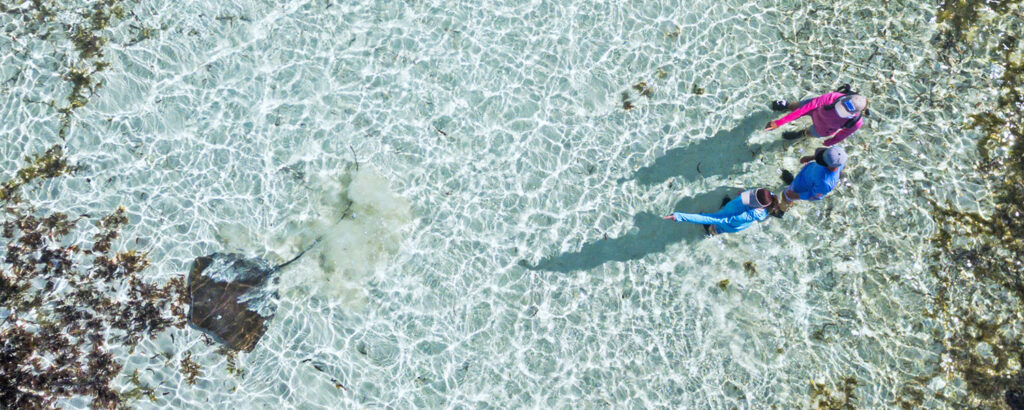
How can visitors actively participate in the conservation efforts?
We offer a range of immersive conservation activities, with the manta experience being particularly popular. Guests swim alongside mantas whilst our marine biologist collects data, observing behaviour and capturing photo IDs. Additionally, we host presentations three times a week about our conservation work.
Our land-based activities include turtle tracking, seabird counts, cycling tours and an immersive guided nature walk across St Francois, which is one of our signature experiences and a favourite among our guests. Guests also have the opportunity to participate in beach cleanups and take a tour of Alphonse Farm, known for its high sustainability and abundant fresh produce.
Can you explain how guests have already positively contributed towards the work of the project so far?
While I predominantly take ID photos, guests have played a crucial role by capturing photos and providing valuable data. They’ve helped identify new mantas and document individuals, such as ‘Grobbies’, who hadn’t been seen in four years! More data points mean more mantas are identified, enhancing our ability to influence policy with robust scientific evidence. These contributions are vital for our research and conservation efforts.
Any particularly memorable experiences/highlights during conservation efforts with guests?!
I’ve had so many amazing experiences! One memorable recent encounter was swimming with a curious juvenile manta that interacted with us for about 15 minutes – swimming around us and then flipping underneath us so we could get a proper look was incredible! Another unforgettable moment was witnessing a formation of 25 mantas feeding simultaneously. Encounters like these are unique to the Seychelles and create lasting memories for our guests.
Perspectives: welcome to our world
Our new interview series illuminates the perspectives of pioneers, visionaries and change-makers that we have the great pleasure and privilege of working with. See the world through the eyes of local experts. Gain insights and inspiration about the destinations, awe-inspiring experiences, innovative projects and people who can enrich your travel adventures. Through these perspectives, you will discover life-affirming travel experiences you never dreamed possible.
Ready to take the road less travelled?
Related articles
